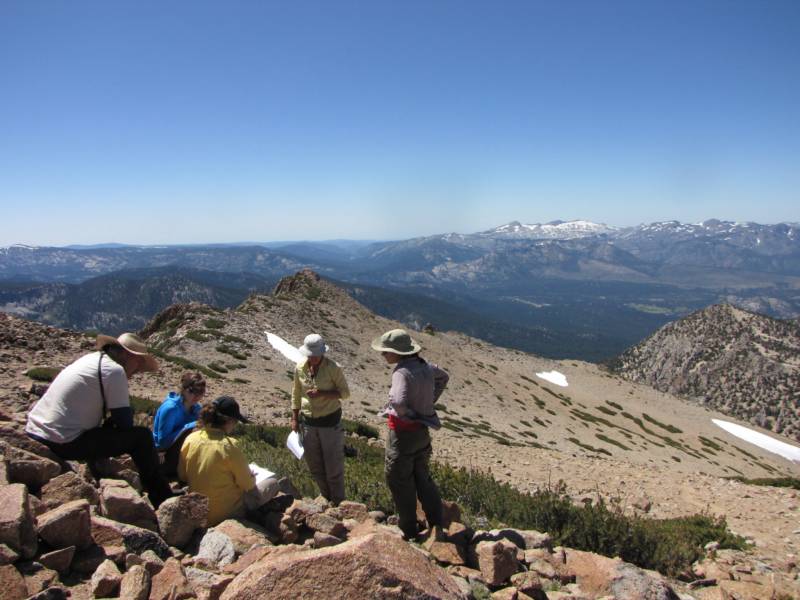Mountaintops can be good places to study the effects of climate change because there aren’t any things like factories or highways or garden weeds up there. In that way, they’re more like laboratories.
So, even though it involved a tough hike, about a dozen scientists gathered at the top of Freel Peak near South Lake Tahoe earlier this summer to count every single plant at the summit. It was for GLORIA, short for Global Observation Research Initiative in Alpine Environments, a project that sends botanists and plant ecologists to the world’s highest mountains to document the tiny, colorful plants that live on them.

GLORIA surveys are repeated every five years, and this was the second survey on Freel Peak. By tracking the changes here, scientists can gain a better understanding of how alpine regions differ in their responses to climate change, and what the future may hold for lower elevations.
“Because of the nature of the alpine habitat, it is more sensitive to environmental changes,” explained GLORIA coordinator Colin Maher. “It’s kind of a beacon. It’s like a warning sign. We might not know for 20 years what’s happening, but it’s a place where change is more likely to happen and we can detect it.”
Plus, the plants are cool for their own sake. They’re specially adapted to live in tough conditions, and even though they’re tiny, many of them can live for decades. But they may not be here forever, and Maher said, that’s another reason to study them now.
“If the climate warms, they’re on an island, essentially. A shrinking island. And since they can’t move down, they can only go up, and that’s only so far,” he said.
Small Budget, Big Commitment
GLORIA is based in Austria, where it was founded about ten years ago. There is no central funding, and so the tools the scientists use to conduct the surveys are inexpensive: plastic flags, colorful string, school binders. Many of the botanists and ecologists are volunteers.
Connie Millar, a researcher with the U.S. Forest Service, helped bring GLORIA to North America. She got a little choked up talking about the people who come out to help.
“The volunteerism is amazing to me. How people feel committed to it. The excellent botany and the care they give,” she said. “It’s very difficult working on summits. It’s extremely challenging. The commitment is extraordinary.”
Listen to the companion radio piece for this story on The California Report.
